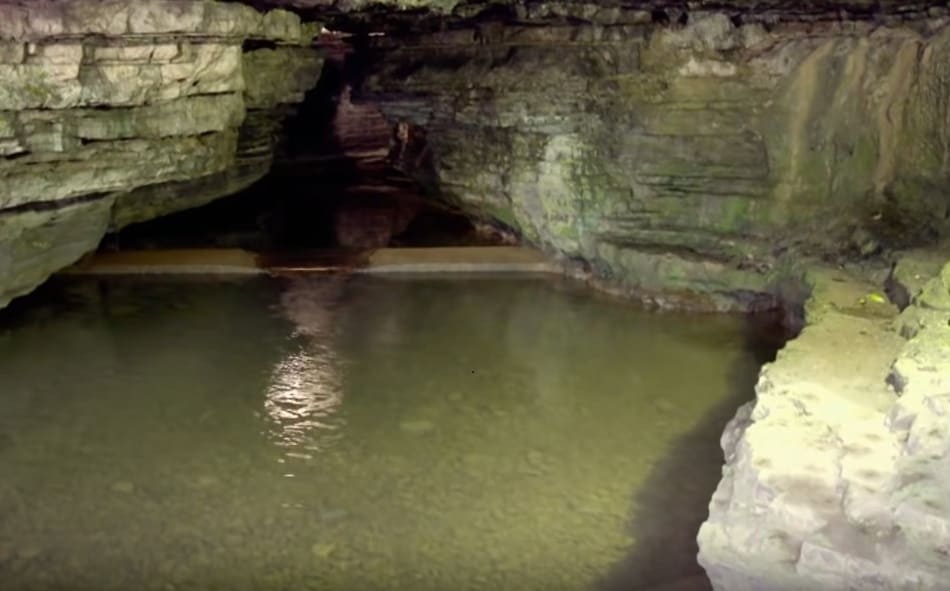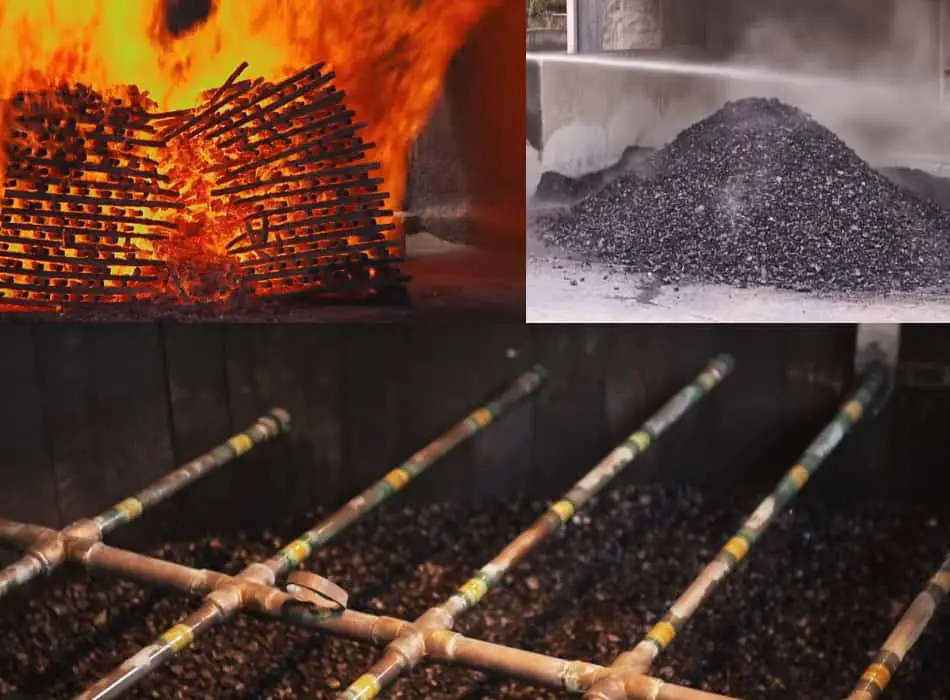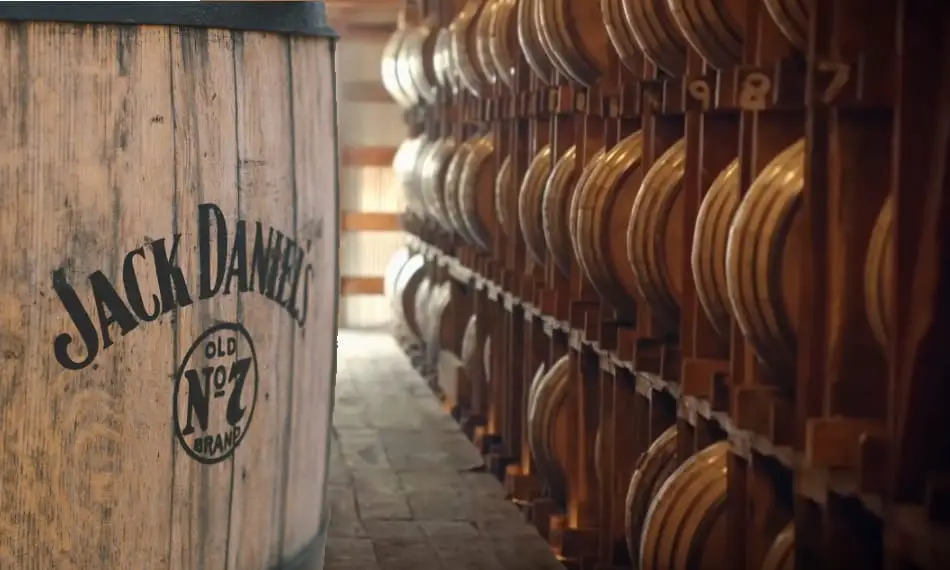Jack Daniel’s is the most popular whiskey brand in the world so it’s no surprise that many people want to know exactly what it’s made of. After some research I found the four ingredients of Jack Daniel’s whiskeys.
1. The Grains
The first ingredient that Jack Daniel’s use to make their whiskeys, are the grains from which it will extract starches to turn into sugars and then into alcohol. These grains are:
- Corn
- Rye
- Malted barley
Of course, the amount of each grain used is not the same, and the proportions differ between the main mash bill that Jack Daniel’s uses for most of its whiskeys and the mash bill it uses for its rye whiskey. The following table shows the proportion of each grain in the two Jack Daniel’s mash bills:
| Corn | Rye | Malted Barley | |
|---|---|---|---|
| Main mash bill | 80% | 8% | 12% |
| Rye whiskey mash bill | 18% | 70% | 12% |
As you can see, Jack Daniel’s main mash bill has a very high percentage of corn – far more than the legal requirement of at least 51% and more than many other similar whiskeys. This is important because corn gives the whiskey sweet flavors and with such a high percentage of corn in the mash bill, it’s no wonder that Jack Daniel’s whiskeys are so sweet.
The high percentage of corn in the mash bill explains why Jack Daniel’s only distills their whiskeys once, unlike other brands that distill their whiskeys two or three times. That’s because the more times a whiskey is distilled the more the flavors from the grain are removed. Distilling its whiskeys once allows Jack Daniel’s to retain more flavors from the mash bill, which makes sense since it’s mostly sweet-flavored corn.
Jack Daniel’s only uses high-quality grains. This means that they’re uncracked, clean and sorted. This is important as it ensures that no foreign materials can get inside the grains and contaminate them, and therefore the whiskey.
2. Natural Spring Water

Water is used at several points in the whiskey making process. It’s used to malt the barley, cook the grains, convert the starches into sugars and to dilute the distillate both before it’s placed into the barrels for aging and again before it’s bottled. That’s why it’s important that the water is free of as many contaminants as possible, otherwise they’ll be transferred to the whiskey and ruin its flavors.
Fortunately, the Jack Daniel’s distillery is located on a site which has a two-mile deep limestone cave that contains natural spring water. And by fortunately I mean that Jack Daniel bought the land for a small fortune (apologies for pun) because the water in the above-mentioned cave is crisp, cool, clean and pure.
The water passes through the many layers of limestone that the cave is made from, which filters out many contaminants including iron, that’s especially problematic to have in the water when making whiskey because it reacts badly with alcohol, turning it black and bitter.
3. The Charcoal Filtering

Charcoal filtering (to remove impurities from the grain and the yeast) is more of a process than an ingredient, but it’s so important to Jack Daniel’s whiskey – they claim it’s what makes Jack Daniel’s its own category of whiskey (Tennessee Whiskey not a bourbon), that I decided to include it as an ingredient.
Jack Daniel’s have their own version of the process.
Firstly, they make their own charcoal. They do this by dousing pallets of hard sugar maple with raw unaged Jack Daniel’s whiskey and then setting it on fire. This way they can ensure that petroleum is not used as fuel which would add an unpleasant taste to the charcoal and then the whiskey, when the whiskey is later filtered through the charcoal.
Secondly, they grind the charcoal down into smaller pieces than usual. This increases the surface area for the off-flavor molecules that are being filtered out, to stick to.
Lastly, they fill 10-foot-deep tanks / vats with this charcoal, which means the whiskey is very well filtered. It takes three to five days for the distillate to work its way to the bottom!
Being charcoal filtered this way means that the Jack Daniel’s distillate is already soft and mellow even before its placed into barrels for aging. It’s this step that gives Jack Daniel’s its distinctive smoothness.
Charcoal filtering is so important to Jack Daniels that it produces a whiskey that is charcoal filtered twice. Gentleman Jack is filtered both before going into the barrels as normal and for the second time after being matured before it’s bottled. This removes even more impurities from the whiskey so it’s even smoother than the regular Jack Daniel’s smoothness.
4. The Barrels

The final ingredient of Jack Daniel’s whiskeys is the barrels. Whiskeys are aged in barrels so that over time the liquid can seep in and out of the wood and pick up its flavors. Several barrel-related factors will affect the final flavor. Here’s how Jack Daniel’s applies them.
The Type of Barrel Used
All American whiskeys must be matured in new, charred, American White Oak barrels. American White Oak contains a lot of wood sugars which when charred, caramelize and turn into flavors the whiskey can pick up. And being new barrels, they still have all their flavors. Which is why they impart vanilla, caramel, honey, and oak flavors to the whiskey.
Jack Daniel’s uses special ‘Sinatra Barrels’ to age their Sinatra Select expression (a whiskey Jack Daniel’s created to pay tribute to Frank Sinatra who had a lifelong friendship with the brand). These barrels are unique because they have deep grooves carved into their staves. This gives the whiskey more exposure to the oak, so it will acquire more flavor than the standard Jack Daniel’s expressions.
Where The Barrel Is Stored
Jack Daniel’s store their barrels in their warehouse, but the exact position inside will affect the maturation process because the environment will be different. The Jack Daniel’s single barrel expressions come from barrels stored in the uppermost part of the warehouse, where increased changes in temperature cause the maturation process to happen faster, and the whiskey to pick up more flavors sooner.
On the other hand, Gentleman Jack comes from barrels stored in the mid-level of the warehouse and below, which is why it’s a softer and more subtle whiskey.
How Long the Whiskey Is Left in The Barrels
Obviously, the longer the whiskey is left to mature the more flavors it will pick up. Even if the barrel is stored in a place in the warehouse which causes the maturation process to be accelerated, leaving it to age for longer will allow the whiskey to pick up even more flavors.
Unlike most other distilleries that age their whiskeys for a specific amount of time, Jack Daniel’s uses taste as well as time to determine when a whiskey has matured. Jack Daniel’s leave their whiskeys to age in the barrels for at least four years, after which they will be sampled every few months by one of their tasters, who will determine based on its flavor if the whiskey is ready.
This means that all Jack Daniel’s whiskeys are at least four years old, but some will be older and (depending on the expression) can be closer to seven years old.
For more information about how Jack Daniel’s whiskeys are made, see my in-depth article about the entire process here.
